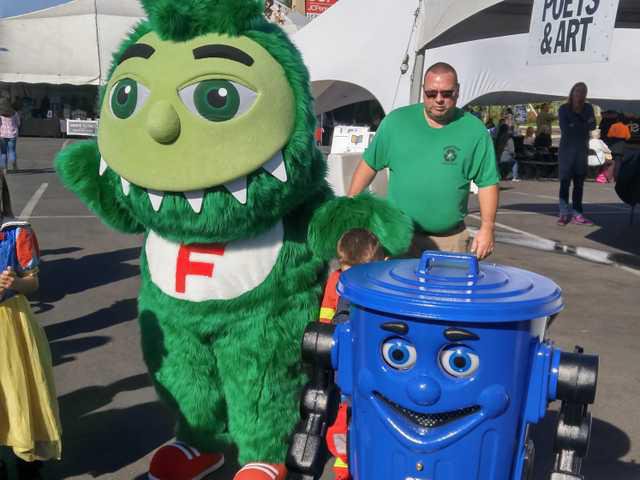Every day more than 14,000 Manteca Unified elementary students that either buy a school lunch or pack their own from home dutifully separate food waste into orange carts and trash into garbage carts under the watchful eyes of student volunteers.
For now, some of the food waste is being converted into compost at a facility in Lathrop while the rest is still landfilled at Austin Road. But in less than two years when new digesters are up and running at the municipal wastewater treatment plant all of that food waste will be turned into compressed gas to provide clean burning fuel to power the city’s fleet of solid waste collection trucks.
“Our goal has been to get everyone in compliance with the new (state) law, even if we are not,” noted Rexie LeStrange who oversees the city’s solid waste operations. “Cal-Recycle is happy with what we are doing getting everyone on board with the program while we get the digesters built. Harvest Power is not permitted to take more than 5% food waste with the green waste so there really is no other option at this point (than to landfill it). Once the digesters are built we will be able to take all the food waste.”
Manteca and other California cities must reduce the food waste they bury by 50 percent by 2018 under state law. Food waste — based on a survey made of random residential brown carts switched out on a collection day that had their contents shifted through by hand — constitutes 35 percent of Manteca’s garbage. While that seems high it is below the state average for food waste in garbage at 40 percent.
While all cities and counties need to start recycling food waste under state mandate, Manteca is one of the first to go a step further and work toward combining it with solid waste from the wastewater treatment process to convert it into fuel to power vehicles. The city has started replacing its refuse collection trucks with those that burn natural gas. Eventually as all of the more than two dozen trucks reach the end of their useful life the entire fleet will be converted. The switch will also help Manteca to meet stringent air standards that are being put in place for the San Joaquin Valley.
The volume of food waste City of Manteca solid waste crews collect in a given week between elementary schools as well as a number of restaurants and supermarkets that are now on board is the rough equivalent of 18 Ford-150 pickup truck loads of food waste a week.
Once high schools start recycling food waste Manteca Unified Director of Nutritional Services Patti Page has said district campuses will generate 1.06 tons of food waste on any given day. That comes to an average of 1.75 ounces of lunch food waste a day from the district’s 24,000 students whether they eat cafeteria food or a sack lunch.
That may sound like a lot but an apple core tossed into the orange carts set aside for food waste comes to three quarters of an ounce. A typical banana peel weighs an ounce.
Commercial food waste collection is also still being rolled out in a bid to get it into place before the digesters come on line to convert food waste into fuel.
“(The) commercial roll out is going well,” LeStrange said. “We have a lot of restaurants on board. We have many of the major players on board.”
As an added bonus, the containers the food waste is placed are locked which greatly reduces if not eliminate people rummaging through them for food and creating a mess. The waste containers are locked for health reasons to avoid smell becoming an issue as well as to prevent it from attracting flies.
To contact Dennis Wyatt, email dwyatt@mantecabulletin.com
Orange is new green
Manteca gears up to convert food waste into fuel for trucks





